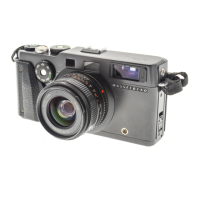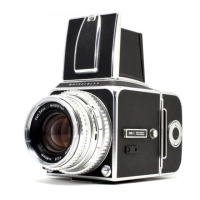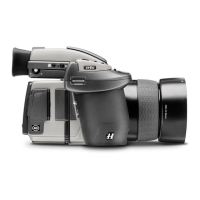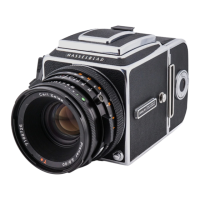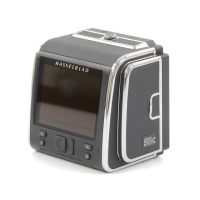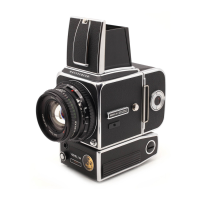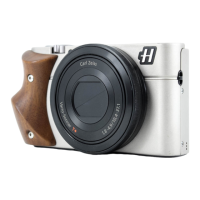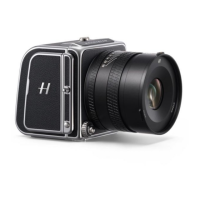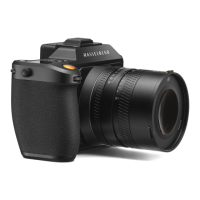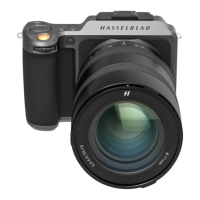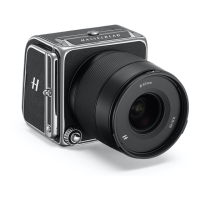
Do you have a question about the Hasselblad 907X Special Edition and is the answer not in the manual?
| Camera Format | Medium Format |
|---|---|
| Sensor Type | CMOS |
| Sensor Size | 43.8 x 32.9 mm |
| Lens Mount | Hasselblad XCD |
| Continuous Shooting | 2.7 fps |
| Monitor Resolution | 920, 000 dots |
| Wireless | Wi-Fi, Bluetooth |
| ISO Sensitivity | 100-25600 |
| Monitor Size | 3.0 inch |
| Screen | Touchscreen |
| Storage Media | SD/SDHC/SDXC |
| Connectivity | USB Type-C, HDMI |
| Battery | Rechargeable Lithium-Ion Battery |
| Viewfinder | Electronic viewfinder |
Overview of the 907X Special Edition camera and its historical context.
Key features of the 907X camera, including lens compatibility and system support.
List of items included in the 907X Special Edition camera package.
Detailed technical specifications of the 907X camera, covering hardware and performance.
Minimum computer capabilities required for storing and editing images.
Information on the user guide's design, interactivity, and printing recommendations.
Definitions of terms used throughout the user guide for clarity.
Instructions and recommendation to update the camera's firmware for latest functionality.
Overview of the Hasselblad XCD lens series with their focal lengths and characteristics.
Information on filter mounts and compatibility for XCD Lenses.
Step-by-step guide to making your first capture with default camera settings.
Instructions for charging the camera battery using the supplied USB power adapter.
Procedure for safely attaching and detaching lenses to the camera body.
Instructions for attaching the included shoulder strap to the camera.
Guidance on using protective covers when the lens or camera body is separated.
Step-by-step process for taking your first photograph with the camera.
How to transfer and view captured images on a computer using Phocus software.
Important warnings and safety precautions for using the camera and its accessories.
General cautions to ensure safe handling and prevent damage to the equipment.
Information on the proper disposal of the product according to local regulations.
Regulatory compliance statements for FCC and ISED regarding radio frequency emissions.
Identification and description of the camera's physical parts, buttons, and controls.
Overview of the camera's ports and connection interfaces for external devices.
Description of the rear display, including its tilt functionality for versatile operation.
Learn how to navigate and control the camera using touch gestures on the display.
Understand the different screens available on the camera's rear display.
Customize and navigate the camera's main menu and favorite shortcuts.
View camera settings and status directly on the control screen.
Understand how exposure parameters are locked and displayed in automatic modes.
Adjust aperture, shutter speed, ISO, white balance, and focus via the control screen.
Configure and use the self-timer for delayed exposures.
Set up and operate the interval timer for time-lapse photography.
Configure exposure bracketing for capturing multiple exposures.
Understand exposure bracketing process and view settings for long exposures.
Set and adjust fixed exposure compensation values for precise exposure control.
Select and understand different light metering modes for accurate exposure.
Manage and understand the status of the camera's SD memory card slots.
Learn how to format SD cards for optimal performance and data integrity.
Understand the various indicators displayed in live view mode.
Customize information overlays and learn to zoom and pan in live view.
Learn the basics of camera focusing, including autofocus activation and indicators.
Interpret AF status indicators (white, black, green, red) in live view.
Use manual focus mode and its assist options for precise focusing.
Utilize focus peaking to identify in-focus areas in manual focus mode.
Set and resize the autofocus point location for accurate focusing.
Navigate camera settings using touch or buttons for efficient menu management.
Enter browse mode and navigate through captured images on the camera.
Learn different methods for zooming and viewing multiple images for quick browsing.
Navigate and select folders or cards to browse images stored on the memory card.
Create new folders on the active SD card to organize captured images.
Learn how to delete images from the memory card via the browse mode.
Change information overlay options when browsing images in one-view mode.
Interpret histograms to evaluate exposure and image quality.
Introduction to Phocus, the professional image processing and file management application.
Explore powerful tools and features offered by Phocus for image editing.
Discover Phocus Mobile 2, the iOS app for image editing and control.
Learn how to connect the camera to a computer or iPad for tethered shooting.
Understand Hasselblad RAW files (3FR) and their processing in Phocus.
Configure core camera operations including exposure, focus, and flash.
Set ISO limits, lens aperture behavior, and B/T modes for camera configuration.
Manage connectivity, display options, and live view simulation for shooting.
Manage SD cards, set image destination, and format cards for optimal use.
Configure date, time, power options, spirit level, and language for camera operation.
Perform firmware updates, manage logs, reset settings, and reset the file counter.
View camera model, firmware versions, serial number, and usage details.
Adapters for mounting different lens systems and a tripod mount ring for support.
Includes XPan lens adapter, remote shutter cord, and a dual battery charging hub.
Instructions for changing the camera's display language.
Procedures for cleaning the sensor filter and lens glass surfaces.
Troubleshoot common error messages and find information about the user guide.

